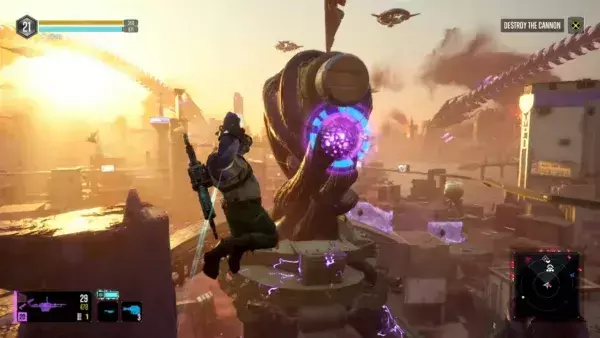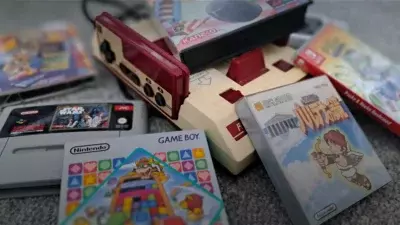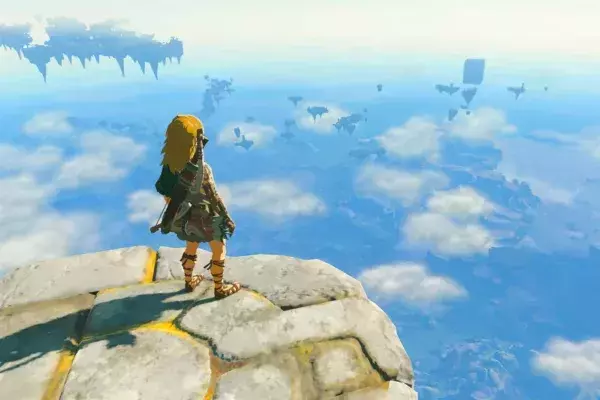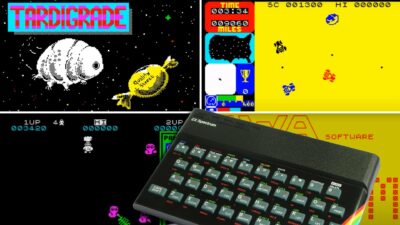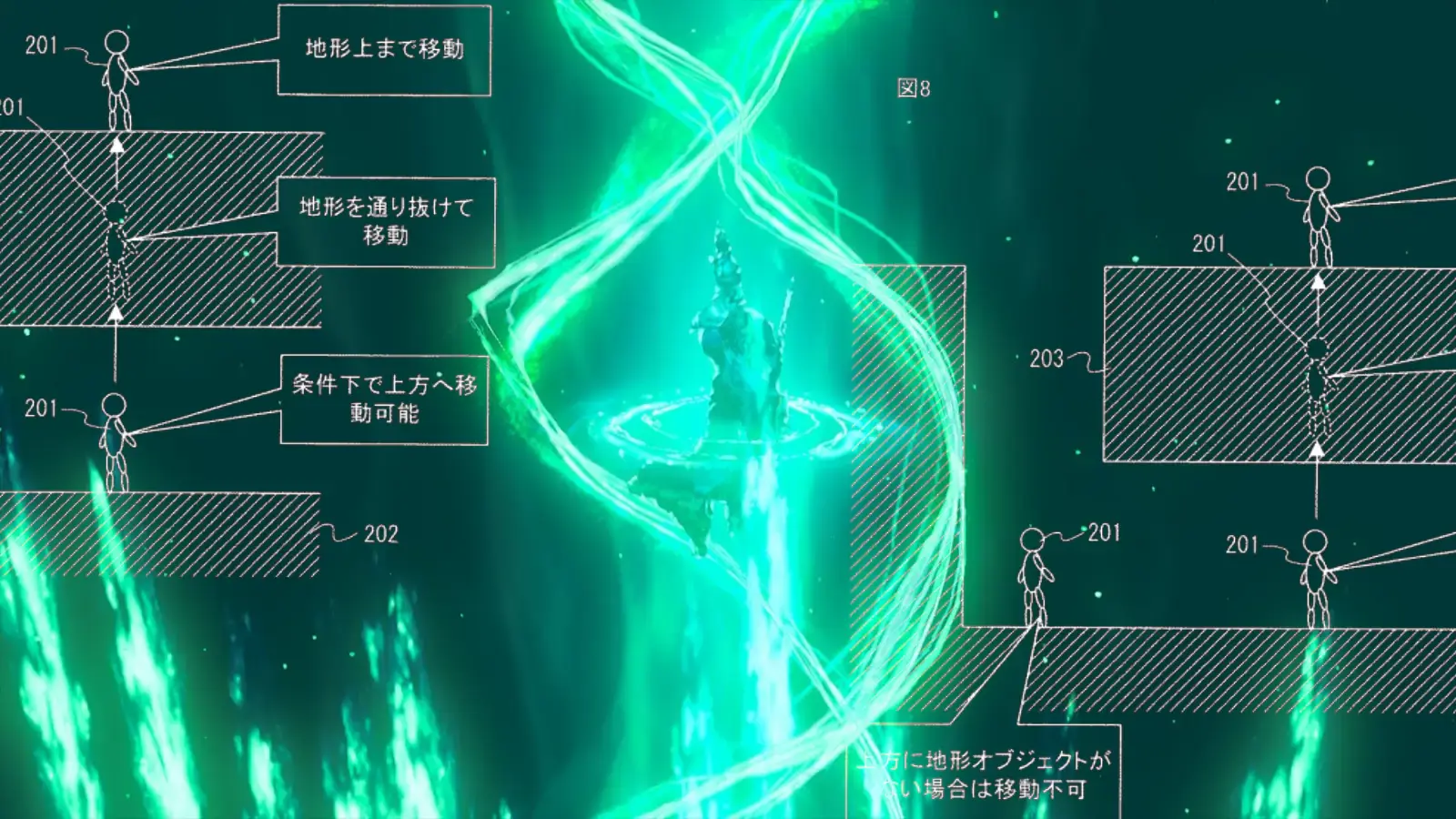
Is the practice of patenting game mechanics a good or bad thing? Are there justifiable reasons to do so, or does it stifle creativity? We spoke to a couple of experts to find out.
In July and August this year, Nintendo registered a whole raft of patents related to The Legend of Zelda: Tears of the Kingdom. These filings sought protection for a number of the game’s mechanics, ranging from the way Link behaves when he’s standing on a moving object to the specific behaviour of the hero’s Ultrahand ability; all told, Nintendo filed 32 patents between 10 July and August 4 2023, according to Automaton.
These aren’t the only patents Nintendo has filed in relation to its Tears of the Kingdom, either. Before the game’s name was even made public, the company registered patents for what we would now recognise as Tears of the Kingdom’s Recall, Ultrahand and Ascend abilities.
The sheer number of patents Nintendo files in relation to its games is striking, but it’s far from an unusual practice. One high-profile example was Warner Brothers Interactive’s 2015 patent for the Nemesis system it created for Middle-earth: Shadow of Mordor. Other examples of game-related patents include BioWare’s dialogue wheel mechanic from the Mass Effect series, and even those loop-the-loops from Sonic the Hedgehog 2.
Patents, when related to game mechanics, have been the source of controversy for years now, with the argument being that locking design ideas behind a patent is anti-consumer, strangles innovation, and shouldn’t be allowed to happen in the first place.
But are there justifiable reasons to patent a game mechanic? Does the practice really stifle innovation? Are there even potential benefits to be gained from it?
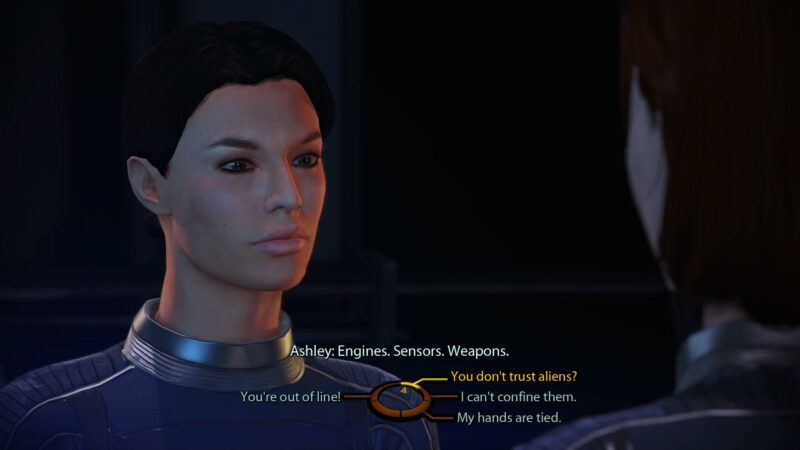
Credit: BioWare/EA.
Re-re-wind
Before we try to answer those questions, it’s probably a good idea to pin down exactly what a patent is. Patent law has existed for hundreds of years and varies from country to country, but the gist is this: an inventor can seek legal protection for their idea, which means that a rival inventor or manufacturer can’t simply copy that idea and unfairly profit from it. Patents generally have a fixed protection period, meaning that the inventor of, say, a new kind of mounted cannon or a novel form of glassmaking can enjoy the fruits of their ideas for a decade or longer.
Patents have been a source of controversy for almost as long as they’ve existed. Advocates argue they encourage inventors to share their ideas rather than shroud them in secrecy, since patents are publicly visible. But then there’s the counter-argument that the patent system is open to abuse, and that innovation is slowed by it – with an invention locked behind a patent filing, the thinking goes, there’s no legal way to iterate and improve on that idea.
Again, these back-and-forth arguments have, particularly in more recent years, been applied to video game patents. In a 2022 blog post, Peter VandeVort – associate editor at the Michigan Technology Law Review journal – writes about the “futility” of patenting game mechanics.
VandeVort cites the ‘Dual-Reality’ mechanic dreamed up by developer Bloober Team for its 2020 horror game, The Medium, in which the player can switch between two worlds at the press of a button. Bloober Team filed a patent for the mechanic long before the game’s release – in March 2016, to be precise – and said patent was granted in 2019.
The problem, VandeVort argues, is that such patents provide developers “no benefit”, and “may potentially hurt them instead.” VandeVort contrasts video games with the pharmaceutical industry – a sector where newly-approved drugs are commonly protected by patents. Where a rival firm copying a pharmaceutical company’s new wonder drug could harm the inventor’s sales, the opposite is true, VandeVort argues, in the games industry.
“As my blog post mentions,” VandeVort tells us via email, “[in the pharmaceutical industry] a person must choose between buying drug A or drug B, but with video games they can get both game A and game B. This means that, more often than not, it’s actually favourable for a game mechanic to be spread around. It means that you can make a better sequel based upon what other games are doing, and it causes people to look back to the original and find out what was so special about it.”
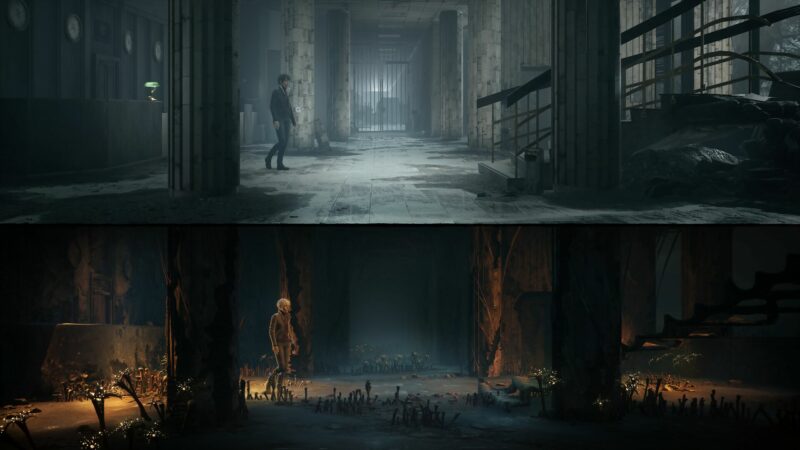
The Medium’s patented Dual Reality mechanic. Credit: Bloober Team.
Prime patents
To prove his point, VandeVort takes us back to 1986 and the birth of the seminal Metroid – one of the earliest mainstream games to popularise the idea of criss-crossing a map in search of items that allow the player to unlock new areas. Today, the Metroidvania is a commonly understood and hugely popular genre in itself – just look at the success of Hollow Knight, Ori and the Blind Forest, Blasphemous, and more besides.
So what if Nintendo had opted to patent the big idea that drove Metroidvania? “Something along the lines of, ‘a game where finding new upgrades lets the player backtrack across a single map to areas previously inaccessible,’” VandeVort suggests.
“This would definitely stifle innovation,” he argues. “For instance, would open world games exist?”
In such a scenario, a lawyer could potentially find a means of arguing that open world games differ from Nintendo’s hypothetical Metroid patent, but the risk of litigation could result in higher prices for games due to the potential legal costs involved.
VandeVort adds that, had Metroid’s mechanics been behind a patent for a decade or more, it “would also potentially hurt Nintendo itself.” Without other companies continuing to iterate and improve the Metroidvania formula, there would have been no basis for developer MercurySteam to build on when it made the 2021 sequel, Metroid Dread.
“Metroid Dread is the most popular Metroid game ever – and even caused increased sales in previous Metroid games,” VandeVort says. “This is because there have been a number of other Metroidvanias in the time since the original, which created new excitement for these types of mechanics. If it was only Metroid games that had this system, I do not think that there would be enough interest in just the series to create these types of numbers. If Metroid had a patent on its exploration mechanics, I don’t think Metroid Dread would exist today, or at least not with the same degree of sales.”
VandeVort also points out that video games aren’t simply technical – they’re an artform. “Games aren’t just something that people play, they are works of art in their own right that inspire future artists to emulate them and build off of them. If some of these core movement and exploration mechanics were patented early on, who knows how the world might be, since there would be a significant group of people who never would have been inspired by them or whose inspiration would have hit a legal wall.”
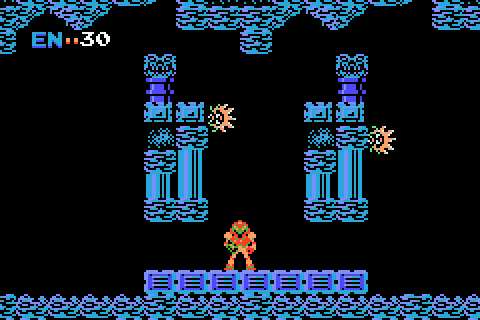
The original, patent-free Metroid. Credit: Nintendo.
Stolen donuts
One area that can benefit from the protection of patents, however, is the indie game sector. Where patents make “no economic sense” for triple-A game studios, VandeVort argues that they are potentially effective for smaller studios who’ve just come up with an innovative new idea that is prone to being cloned by a rival company.
Says VandeVort, “For a small developer, there is a chance that, if they are too slow in releasing their game, somebody else will come and essentially steal the mechanic before their game can popularise it. A key example of this is the game Donut County, which infamously had its unique core mechanic stolen a few months before release. A separate developer, Voodoo, turned this into a free mobile game, Hole.io.
“I think for these small developers it makes economic sense to get a patent on a unique mechanic to prevent these types of situations, since you can’t get famous for creating an innovative mechanic if you aren’t the first one to produce a game with it. Additionally, they can then license the mechanic at a cheap price, or even potentially for free after their game is published- they just want protection until that point.”
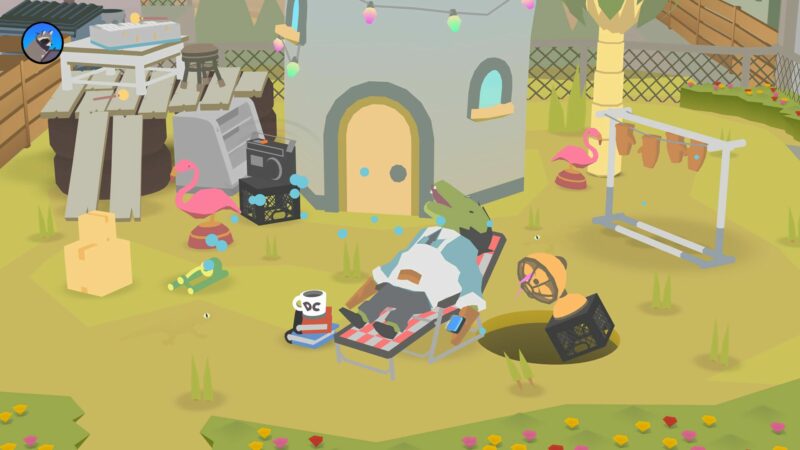
The charming Donut County, whose physics-based puzzle mechanics were ‘borrowed’ by Hole.io. Credit: Ben Esposito/Annapurna Interactive.
Finite filings
One lawyer who argues against the suggestion that patenting game mechanics tends to stifle creativity – whether in triple-A or indie games – is Calum Smyth, partner at legal firm Wiggin LLP and an expert in intellectual property and tech law.
“While it is not perfect, generally speaking the patent system is designed to reject ideas that are overly broad or that are not new or inventive,” says Smyth. “Where a patent is granted (and many are not), it gives the innovator the ability to generate revenue in return for their financial investment in developing the new technology; for example, by licensing it for royalties that can be re-invested in research and development. It is worth remembering that patents [exist[ for a finite term, and when the patent expires, the world is free to use its teaching to implement that technology into existing products and services.”
Examples of patents that have expired in recent years include Dance Dance Revolution’s press-sensitive dance pads, which ended in August 2021, and Tekken’s combo tutorials (October 2020). One particularly infamous example was Namco’s 1995 filing of a patent for Ridge Racer’s loading screen minigames – this allowed players to enjoy a brief bout of Galaxian while the main game loaded up in the background. It was a fun idea that other games – and their players – could have benefited from, particularly in the early days of CD-based consoles when access speeds were slow. Instead, Namco’s patent meant that other studios couldn’t use it.
When the patent on loading screen mini-games finally expired in 2015, indie developers celebrated by holding a Loading Screen Game Jam: “This patent has held back a ton of creative ideas for so long,” reads the competition’s itch page.
Interestingly, Namco didn’t actually invent the loading screen minigame. Almost a decade earlier, in 1987, Richard Aplin, a programmer at British publisher Mastertronic created a system called Load-’n-Play, which kept players amused with a simple shooting game while the main game, Kromazone, loaded in the background.
This highlights a potential flaw that applies not just to patenting game mechanics, but to the legal system in general: it’s the bigger companies like Namco and Nintendo, who can afford the expense of filing patents applications and the legal fees that go with enforcing those patents, who benefit most.
This brings us back to Voodoo, the developer that rushed out the Donut County-like free mobile game, Hole.io. “There is still the legal reality that a company like Voodoo, which is backed by Goldman Sachs, has so much money that they can try to still copy the mechanic and hope that the case never goes to trial due to the high legal fees for the developer,” says VandeVort. “Unfortunately, that is the nature of such a patent system, but at least the hope of protection is better than no protection at all.”
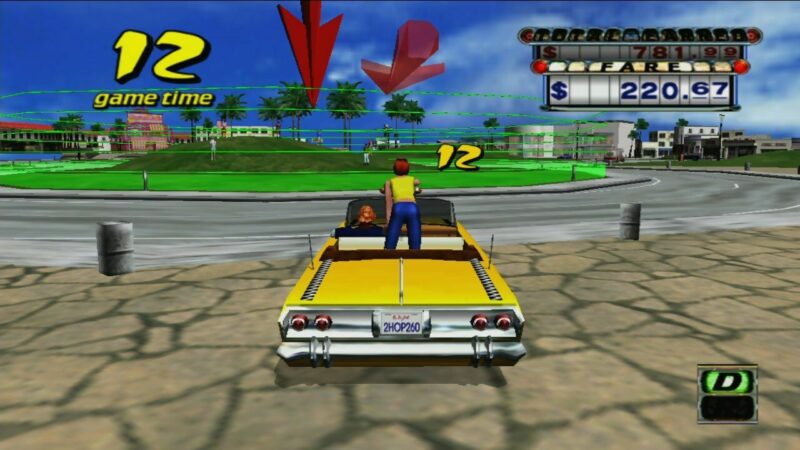
Crazy Taxi and its patented arrow mechanic. Credit: Sega.
Slings and arrows
There are certainly precedents for major game companies taking other studios to court for infringing their patented game mechanics. In 1998, Sega filed a patent for a “moving direction indication method” – in other words, the big, brassy arrow that guided the player around in the arcade hit, Crazy Taxi. In 2003, Sega sued publisher Electronic Arts for the alleged patent infringement it saw in the latter’s arcade racer, Simpsons Road Rage, and demanded that the game be pulled from shelves. The matter was reportedly settled out of court for an undisclosed sum.
Patented game mechanics can therefore represent something of a minefield for developers. Filings may be publicly available, but they’re often shrouded in complex and often impenetrable legal speak, and while a game developer could hire a lawyer to ensure their work-in-progress doesn’t infringe any existing patents – something VandeVort recommends – smaller studios are unlikely to have the funds to do so.
Still, while both VandeVort and Smyth concur that the patent system is “not perfect”, they argue that it still has its uses. “The patent system is a deal with the government: you provide the information so that anybody else can copy your product, they just can’t do it for 20 years,” says VandeVort. “But by providing this information people can skirt just around the edges of the patent to innovate there, and that’s often what happens. One question that’s often presented is: if a person/company didn’t have the guarantees of protection from the patent system, would they even innovate at all? I think the general answer is no, but that answer changes somewhat for an industry like video games. Until there are more stringent laws about software patents, though, we have to accept the system as it is.”
Whether or not you agree with the sentiment that patenting game mechanics stifles innovation, one thing seems certain: the number of patents filed will continue to grow in the years to come. “Technology such as AI/machine learning or AR/VR will increase the opportunity for creating inventions that relate to new technical applications for modern technology in a video game setting,” says Smyth. “And then there are also hardware aspects that may lend themselves to patentable inventions, such as next-generation consoles or the newest virtual reality headset.”
As for Nintendo and its dozens of Zelda: Tears of the Kingdom patents – only time will tell what impact those filings will ultimately make. While some developers seem relaxed about other designers borrowing their patented ideas – as VandeVort notes, BioWare patented the dialogue system found in Mass Effect, but “has rarely if ever enforced it, allowing many copycats.”
Nintendo, meanwhile, tends to be quite trigger-happy when it comes to deploying lawyers. It’s certainly something to bear in mind if you’re a developer thinking of deploying anything that looks like an Ultrahand or Fuse ability in your own game.


